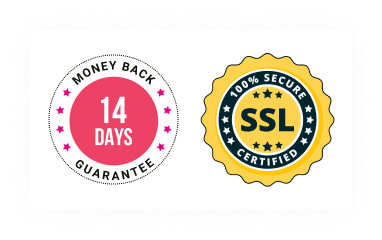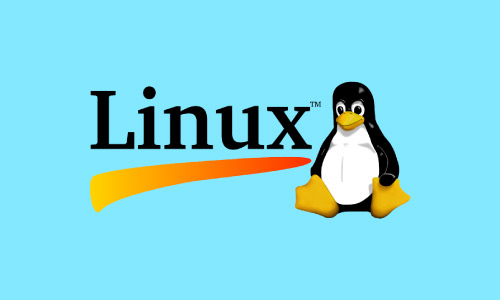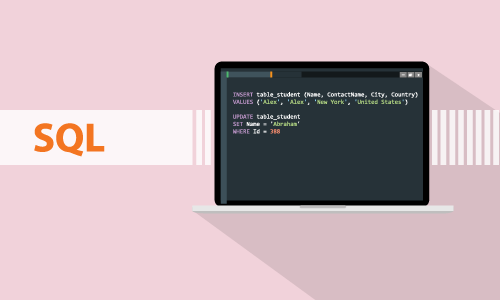Course Curriculum
| Introduction to Linux | |||
| Introduction to Linux | 00:08:00 | ||
| Linux distributions explained | 00:07:00 | ||
| Linux Installation | |||
| VirtualBox installation and virtual machine setup | 00:08:00 | ||
| Ubuntu Linux installation in a virtual machine | 00:07:00 | ||
| Ubuntu Linux setup in a virtual machine continued | 00:06:00 | ||
| First bootup into Linux | 00:02:00 | ||
| VirtualBox Guest Additions | 00:08:00 | ||
| Ubuntu desktop customization | 00:08:00 | ||
| Unity Tweak Tool | 00:12:00 | ||
| Installing Linux alongside Windows (dual boot) | 00:06:00 | ||
| Dual boot setup continued | 00:10:00 | ||
| Linux Command Line Interface (CLI) Essentials | |||
| Introduction to the Linux command line interface (CLI) | 00:06:00 | ||
| Navigating directories with the ls command | 00:08:00 | ||
| Administrator privileges in terminal | 00:06:00 | ||
| Using the package manager to install new applications | 00:04:00 | ||
| Searching through the repositories to find new applications to download | 00:02:00 | ||
| Installing packages which are not located in the repositores | 00:05:00 | ||
| Keeping programs updated via terminal | 00:05:00 | ||
| File permissions and ownership explained | 00:04:00 | ||
| File permissions and ownership continued | 00:08:00 | ||
| Creating new files using the touch command.mp4 | 00:05:00 | ||
| Creating new directories and moving files | 00:05:00 | ||
| Copying, renaming, and removing files.mp4 | 00:05:00 | ||
| Advanced CLI Usage | |||
| The find command and it’s practical uses | 00:04:00 | ||
| The find command and it’s practical uses continued | 00:05:00 | ||
| Find command final thoughts | 00:03:00 | ||
| Using the grep command to find information within files | 00:03:00 | ||
| Using grep in conjunction with the find command | 00:03:00 | ||
| How to redirect the output of a command | 00:03:00 | ||
| Using the top command to view applications in real time | 00:01:00 | ||
| Viewing the entire list of open processes and closing applications via terminal | 00:06:00 | ||
| Services explained | 00:02:00 | ||
| Configuring services via terminal | 00:05:00 | ||
| Using crontabs to schedule tasks | 00:03:00 | ||
| Crontab practical applications | 00:03:00 | ||
| Linux Development Tools | |||
| Choosing an integrated development environment (IDE) | 00:04:00 | ||
| Eclipse installation and setup | 00:04:00 | ||
| PyCharm installation and setup | 00:05:00 | ||
| PyCharm installation problem resolved | 00:02:00 | ||
| GitHub installation and how to setup a repository | 00:04:00 | ||
| How to push and pull information from our repository | 00:06:00 | ||
| How to remove and ignore directories in our repository.mp4 | 00:05:00 | ||
| How to resolve merge conflicts | 00:07:00 | ||
| How to setup and manage branches | 00:07:00 | ||
| Correction from previous lecture | 00:01:00 | ||
| Web Development Project | |||
| Getting started with Meteor | 00:06:00 | ||
| Setting up our Meteor project | 00:06:00 | ||
| Setting up our router and React components | 00:06:00 | ||
| Watch as our Meteor project begins to take form | 00:07:00 | ||
| Getting into the programming of our Meteor app | 00:13:00 | ||
| Rendering our blog posts | 00:09:00 | ||
| Putting the finishing touches on our Meteor app | 00:06:00 | ||
| Web Server Setup, Host Cofiguration and App Deployment | |||
| Apache 2, PHP 5, and MySQL setup | 00:04:00 | ||
| Server configuration | 00:06:00 | ||
| Linux hosts file | 00:03:00 | ||
| Deploying our Meteor to our Apache 2 server | 00:05:00 | ||
| Setting up our MongoDB NoSQL database | 00:05:00 | ||
| Setting up our virtual host | 00:04:00 | ||
| Using a shell script to set our environment variables | 00:08:00 | ||
| Installing and configuring phpMyAdmin | 00:03:00 | ||
| Let’s take a tour around the phpMyAdmin panel | 00:05:00 | ||
| Creating a basic virtual host | 00:08:00 | ||
| Setting up a WordPress installation on top of our Apache 2 environment | 00:07:00 | ||
| Before using WordPress we need to setup our database | 00:06:00 | ||
| Python installation and command line interface | 00:04:00 | ||
| Why is Python 3 worth learning | 00:04:00 | ||
| Linux User Management | |||
| Adding and removing users through the graphical user interface (GUI) | 00:04:00 | ||
| Adding new users through terminal.mp4 | 00:04:00 | ||
| How to delete users through terminal | 00:01:00 | ||
| How to change an exsisting user’s password | 00:01:00 | ||
| Adding users to a group and why this is valuable | 00:04:00 | ||
| Linux Network Administration | |||
| Introduction to networking | 00:02:00 | ||
| How does the internet work | 00:05:00 | ||
| What is a local area network | 00:07:00 | ||
| Practical networking commands | 00:06:00 | ||
| Practical networking commands continued | 00:05:00 | ||
| Using netstat to track detailed network statistics | 00:05:00 | ||
| An in-depth look at the Linux hosts file | 00:05:00 | ||
| Linux hosts file continued | 00:05:00 | ||
| Using traceroute to track the servers a request passes through | 00:04:00 | ||
| Using network mapper to track the activity on your network | 00:08:00 | ||
| Network mapper continued | 00:07:00 | ||
| Using SSH to access the command line of a remote host | 00:03:00 | ||
| Using SFTP to transfer files to and from machines | 00:04:00 | ||
| Setting up an SSH host on our local machine | 00:05:00 | ||
| Using the man command to learn about the programs on your machine | 00:04:00 | ||
| Order Your Certificate | |||
| Order Your Certificate Now | 00:00:00 | ||

0
0
Your Cart
Your cart is emptyBrowse Courses
Upgrade to get UNLIMITED ACCESS to ALL COURSES for only £49/year
Claim Offer & UpgradeMembership renews after 12 months. You can cancel anytime from your account.
Other Students Also Buy





 1 Year Access
1 Year Access 
 28 Students
28 Students  7 hours, 25 minutes
7 hours, 25 minutes 








